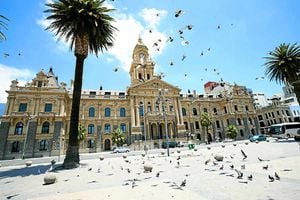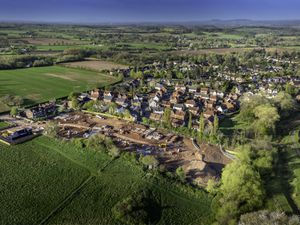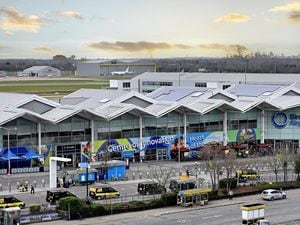The Cape Town Affair
[gallery] Safari and a city break, what could be better? I enjoyed the best of both worlds during a whirlwind trip to Cape Town and the surrounding area.

First I journeyed into the wild where every silent, creeping step on the dusty terrain feels like we're dicing with death. We've abandoned the safety of the safari jeep in search of rare white lions and the ranger's tracking signal has revealed they're a little too close for comfort.
We stop in our tracks as our ranger points out the lioness and her male cubs, grazing on a kill.
And then they spot us. Two inquisitive fur balls curiously peek through the overgrown grass, while the female lion gazes at us intently as we marvel at the family scene.
It's hard to believe this exchange with one of the world's most endangered animals in a breathtaking wilderness is just a three-hour drive from the bustling bars, shops and restaurants of Cape Town.
Boasting the 'Big Five', Sanbona Wildlife Reserve is one of the largest privately owned wildlife parks in the Western Cape, where animals roam freely on 54,000 hectares.
The location makes it a perfect option for a safari-city two centre stay. It's a getaway of extreme contrasts, but it's one that's entirely possible in five action-packed days.
On arrival at Sanbona, we practically drop our cases and dash to the jeep for an evening game drive that catches the last of the South African sun.
The first moment I see an animal is unforgettable. I spy a glimpse of tough grey skin between the bushes – a huge lone hippo chomping on grass for supper. Then we spot two young bull elephants gently play-fighting.
We're so caught up in the action we're startled to see another elephant, so close to our open-top jeep you can see every crease in its weathered skin.
Gathering at the Gondwana Lodge that night, drinking local wine under the stars, I can't believe how much I've already seen.
Overlooking Bellair Dam, with endless views of the vast plains, my luxurious lodge, which resembles a typical thatched Karoo homestead, is pure serenity.
While the animals can and do roam freely on the reserve, the lodge is enclosed by electrical fences so it's unlikely a hippo is going to try and join you for a dip in the pool.
In their territory, it's a different story.
We regularly hop out of the jeep to seek wildlife on foot and experience the landscape with the game ranger who identifies fascinating plants, insects and tracking marks that provide vital clues to animals' whereabouts.
With predators lurking, these up-close exhilarating walks require single line formations, keeping a beady eye, and staying close to the ranger.
Monitoring the animals is vital for protecting them, and all key species in the park are fitted with tracking devices making them easier to spot. But despite a strong signal on the ranger's antenna we spend more than an hour hunting for a five-year-old female cheetah, akin to finding a needle in a desert haystack.
We eventually locate her sitting under a tree, camouflaged amid rocks. We watch her yawn and sleep, and she watches us back. Thanks to a full belly, she barely looks disturbed.
But it's during our long search that I really appreciate the full scope of what a safari offers – I listen to the cheery squawks of the Hadeda Ibis bird, follow baboons' human-like footprints and peek into huge aardvark holes. Wildlife manager Paul Vorster says: "People are overly obsessed with ticking off the Big Five.
"Seeing the high profile species is a bonus but it's important to take in the smaller things in the environment – the things that make the whole system work."
Dragging my heels as I leave Sanbona, we embark on the 270km drive to Cape Town. It takes almost an hour to navigate the reserve's bumpy gravel roads but we spot a rhino en route and it's not long until tusks are swapped for tarmac and the smooth drive to the city. There's plenty to keep you entertained along Route 60 and 62 besides the dramatic mountain ranges. Street sellers touting boxes of fruit and extravagant feather dusters line the roads, and it's possible to spot ostrich and wildebeest along the way. We also stop off at wine and brandy distilleries (all in the interests of research).
On arrival in Cape Town, I'm in awe of the view from the dizzy heights of my Taj hotel room facing Table Mountain.
The city's famous landmark was voted one of the New Seven Wonders of Nature, and it is well worth making the journey to the top for spectacular views of the city.
After sunrise starts and safari itineraries, I was keen to explore the city at a slower pace. A whistle-stop city guide was a great way to take in the highlights.
In less than two hours (comfy, flat shoes essential) we explored trendy Long Street, packed with restaurants and bars, took colourful pictures of the flower sellers in Adderley Street and enjoyed a history lesson at Government Gardens.
As I look back on my snapshots of sunbathing white lion cubs alongside scenes of cosmopolitan Cape Town, I'm practically purring like a big cat on the plane home.





